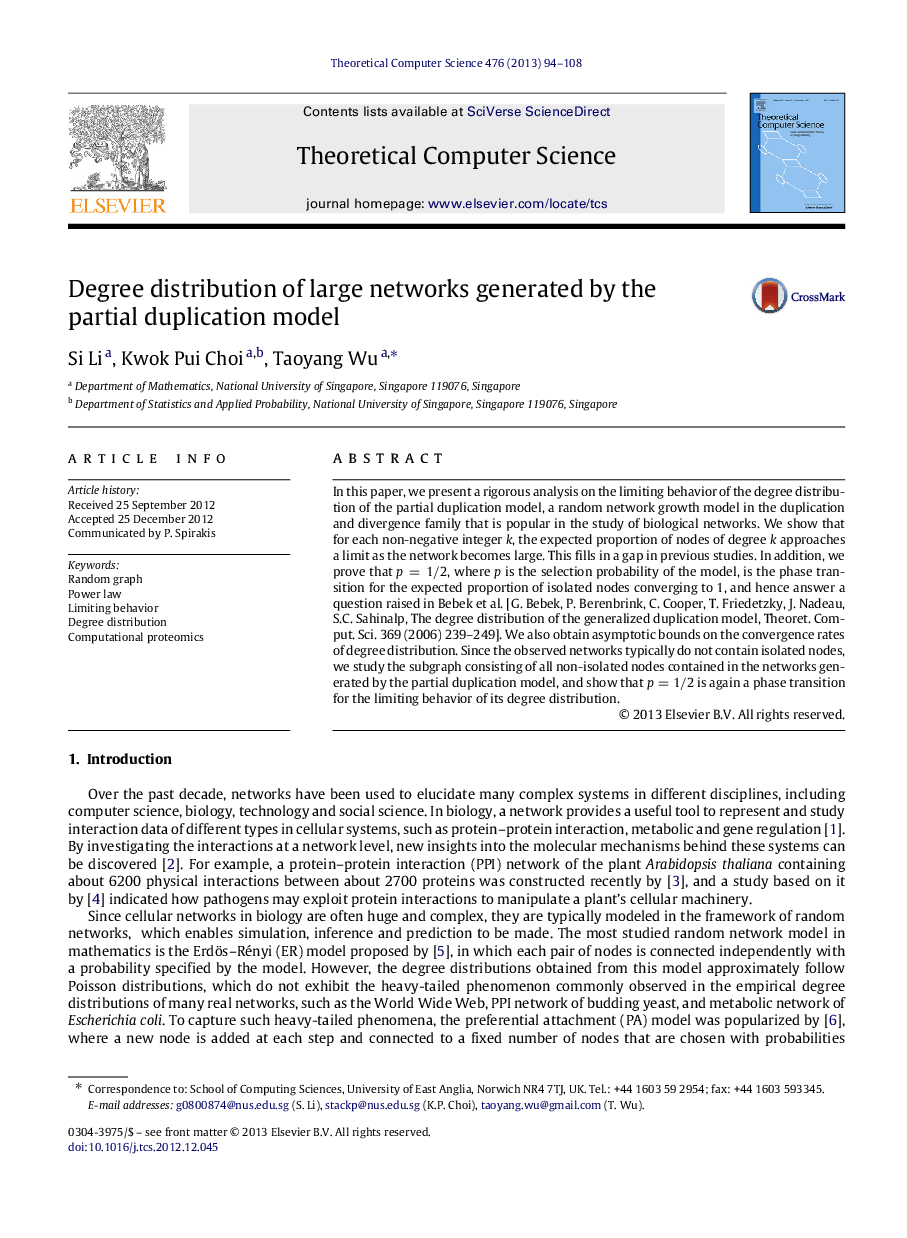| Article ID | Journal | Published Year | Pages | File Type |
|---|---|---|---|---|
| 436925 | Theoretical Computer Science | 2013 | 15 Pages |
In this paper, we present a rigorous analysis on the limiting behavior of the degree distribution of the partial duplication model, a random network growth model in the duplication and divergence family that is popular in the study of biological networks. We show that for each non-negative integer kk, the expected proportion of nodes of degree kk approaches a limit as the network becomes large. This fills in a gap in previous studies. In addition, we prove that p=1/2p=1/2, where pp is the selection probability of the model, is the phase transition for the expected proportion of isolated nodes converging to 1, and hence answer a question raised in Bebek et al. [G. Bebek, P. Berenbrink, C. Cooper, T. Friedetzky, J. Nadeau, S.C. Sahinalp, The degree distribution of the generalized duplication model, Theoret. Comput. Sci. 369 (2006) 239–249]. We also obtain asymptotic bounds on the convergence rates of degree distribution. Since the observed networks typically do not contain isolated nodes, we study the subgraph consisting of all non-isolated nodes contained in the networks generated by the partial duplication model, and show that p=1/2p=1/2 is again a phase transition for the limiting behavior of its degree distribution.
► A rigorous analysis on the limiting behavior of the partial duplication model. ► The expected proportion of nodes of a given degree approaches a limit. ► The phase transition for the proportion of isolated nodes converging 1 is p=1/2p=1/2. ► Asymptotic bounds on the convergence rates of degree distribution. ► A power-law distribution exists for the non-isolated subgraph only when 0
